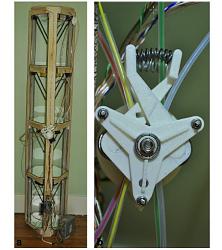Additive manufacturing with 3-D printers may be a key technology enabler for entrepreneurs seeking to use disruptive innovations such as business models utilizing distributed manufacturing. Unlike centralized manufacturing, distributed manufacturing makes the parts and products (the prints) at (or closer to) the source of the demand, cutting out much of the traditional supply chain. Although many expect 3-D printing to take off at the household level and previous work has shown significant returns for those choosing to do so, there are still significant barriers to entry for typical consumers. Our analysis demonstrates that for an individual to make an abnormally high return on their investments in 3-D printers, they must serve others to achieve high utilization rates. The impetus to do so is created by a service that can undercut traditionally manufactured products due to affordability and customizability. Low-cost, open-source 3-D printers are now priced within range of individual entrepreneurs who can take advantage of the long tail of consumers with highly varied interests. The margin advantage, net present value, and return on investment (ROI) analysis provided herein could form the basis of thousands of new small-business ventures in the coming years.
For more information, visit the project's page on Appropedia:
https://www.appropedia.org/Open-sour..._manufacturing
Download the academic paper here:
https://www.academia.edu/26436543/Op..._Manufacturing



 LinkBack URL
LinkBack URL About LinkBacks
About LinkBacks



 Reply With Quote
Reply With Quote
Bookmarks